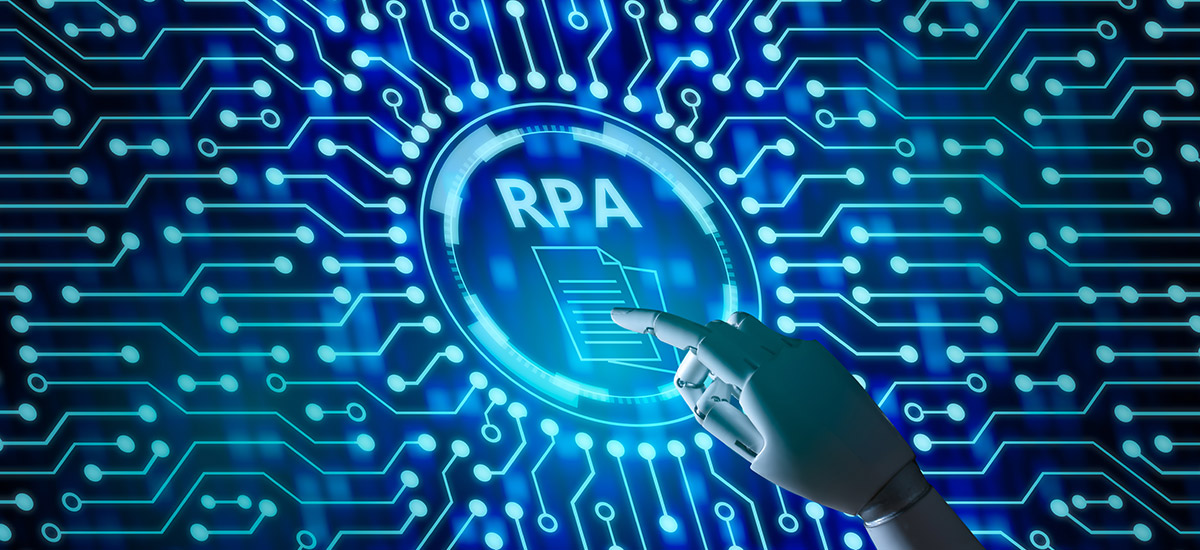
Technology in Action: How Robotic Process Automation Is Working to Transform Federal Buying
Post filed in: Technology
When you hear about robotic process automation (RPA), you might think of robots like you’ve seen in the movies. But, in reality, RPA is far from a rising up of machines—it does not actually involve any physical or mechanical robots.
What is RPA?
Robotic process automation is a form of automation software. It uses software robots, more commonly called “bots,” that mimic basic human-computer interactions. These interactions include mundane and repetitive computer-based tasks and processes, such as those that exist in the workplace.
RPA does not involve any sort of artificial intelligence (AI) where the automation software provides independent judgment and decision making. Rather, it’s a software that is programmed and “taught” a workflow with many steps and applications.
Unlike AI, which uses unstructured inputs and develops its own logic, RPA uses more structured inputs and logic. It uses these inputs in rule-based scenarios. These scenarios regularly repeat intervals or pre-defined triggers. The process has defined inputs and outputs.
Example: Online returns
An RPA you likely interact with is online merchandise returns processing. When you start a return, the bot
- generates a message that confirms the return,
- issues a return receipt,
- adjusts the payment, and
- updates the merchant’s inventory.
Using RPA software allows workers to focus on more complex return processes or customer service issues.
How is GSA using RPA to transform federal buying?
Most industries use RPA. The federal government does, too.
Since GSA launched the Truman bot in 2020, we’ve been using RPA to streamline our internal acquisition processes.
Today we have about 30 acquisition related RPAs at work in contract formation and management to remove administratively burdensome, low-value tasks from the workforce.
“Robotic process automation frees GSA’s acquisition workforce from repetitive, administrative tasks,” said Senior Procurement Executive Jeff Koses. “It allows our acquisition workforce to spend their time negotiating and administering contracts and delivering for our customer agencies.”
For example, we use RPA for contract closeout and contractor responsibility determinations. We are developing new bots for tasks like invoicing.
CLARA (closeout robotic assistant)
CLARA offers users four automation pathways for contract closeout support:
- release of claims creation,
- financial review,
- de-obligation modification preparation, and
- contract closeout.
CLARA provides a full financial review to contracting officers at any point in the contract’s life including closeout.
CLARA uses this review to identify financial eligibility for closeout. If it identifies unliquidated obligations, CLARA can then create the corresponding deobligation modification. It will notify the contracting officer when the mod is ready for signature. After the modification execution, CLARA can fully close out the award in the procurement system including all necessary filing.
Since CLARA’s phased roll out, which began in August of 2021, it has processed about 15,000 transactions and closed 6,000 awards, saving over 17,000 hours! Watch a demo of CLARA.
Contractor responsibility bots
One of many contracting officers’ responsibilities is conducting a contractor responsibility determination. That means they need to determine if companies who submit offers in response to the solicitations are responsible according to FAR.
To do this, contracting officers must research offerors’ UEI number in both SAM.gov and FAPIIS.gov to summarize vendor information and document any findings.
For this automation, a requestor sends an email listing UEI numbers to be researched to the bot monitored mailbox. That email triggers the bot to access public information on both SAM.gov and FAPIIS.gov. It then sends that research back to the requestor’s email address.
As of June 2022, the bot has successfully run 6,271 transactions saving 3,136 working hours.
Bots in development
GSA also has many bots in development. One example is an invoice migration bot that takes a screenshot of a submitted invoice in the financial system. It then moves into the contract writing system using the screenshot with the intent to remediate deficient contract documentation surrounding payment procedures.
Community of practice
Interested in learning more about RPAs? Join the RPA Community of Practice. It helps convert RPA enthusiasm into action:
- helping agencies develop programs that are cost-effective and auditable,
- avoid common pitfalls, and
- make a significant impact!

 U.S. General Services Administration
U.S. General Services Administration
